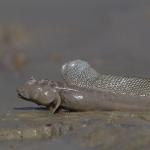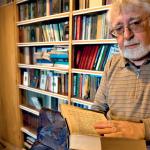Normal physiology: lecture notes Svetlana Sergeevna Firsova
2. Functions of the sympathetic, parasympathetic and metsympathetic types of the nervous system
Sympathetic nervous system carries out the innervation of all organs and tissues (stimulates the work of the heart, increases the lumen of the respiratory tract, inhibits the secretory, motor and absorption activity of the gastrointestinal tract, etc.). It performs homeostatic and adaptive-trophic functions.
Its homeostatic role is to maintain the constancy of the internal environment of the body in an active state, i.e.
the sympathetic nervous system is included in the work only during physical exertion, emotional reactions, stress, pain effects, blood loss.
The adaptive-trophic function is aimed at regulating the intensity of metabolic processes. This ensures the adaptation of the organism to the changing conditions of the environment of existence.
Thus, the sympathetic department begins to act in an active state and ensures the functioning of organs and tissues.
parasympathetic nervous system is a sympathetic antagonist and performs homeostatic and protective functions, regulates the emptying of hollow organs.
The homeostatic role is restorative and operates at rest. This manifests itself in the form of a decrease in the frequency and strength of heart contractions, stimulation of the activity of the gastrointestinal tract with a decrease in blood glucose levels, etc.
All protective reflexes rid the body of foreign particles. For example, coughing clears the throat, sneezing clears the nasal passages, vomiting causes food to be expelled, etc.
Emptying of hollow organs occurs with an increase in the tone of smooth muscles that make up the wall. This leads to the entry of nerve impulses into the central nervous system, where they are processed and sent along the effector path to the sphincters, causing them to relax.
Metsympathetic nervous system is a collection of microganglia located in the tissues of organs. They consist of three types of nerve cells - afferent, efferent and intercalary, therefore, they perform the following functions:
1) provides intraorganic innervation;
2) are an intermediate link between the tissue and the extraorganic nervous system. Under the action of a weak stimulus, the metsympathetic department is activated, and everything is decided at the local level. When strong impulses are received, they are transmitted through the parasympathetic and sympathetic divisions to the central ganglia, where they are processed.
The metsympathetic nervous system regulates the work of smooth muscles that are part of most organs of the gastrointestinal tract, myocardium, secretory activity, local immunological reactions, etc.
From the book Nervous Diseases author M. V. Drozdov From the book Normal Physiology: Lecture Notes author Svetlana Sergeevna Firsova From the book The Problem of the "Unconscious" author Philip Veniaminovich Bassin author From the book Fundamentals of Intensive Rehabilitation. Spine and spinal cord injury author Vladimir Alexandrovich Kachesov From the book Normal Physiology author Nikolai Alexandrovich Agadzhanyan From the book A Complete Guide to Analyzes and Research in Medicine author Mikhail Borisovich Ingerleib From the book Heal Yourself. About therapeutic fasting in questions and answers (2nd edition) author Georgy Alexandrovich VoitovichThe sympathetic and parasympathetic nervous systems are parts of one whole, the name of which is the ANS. That is, the autonomic nervous system. Each component has its own tasks, and they should be considered.
general characteristics
The division into departments is due to morphological as well as functional features. In human life, the nervous system plays a huge role, performing a lot of functions. The system, it should be noted, is quite complex in its structure and is divided into several subspecies, as well as departments, each of which is assigned certain functions. It is interesting that the sympathetic nervous system was designated as such in the distant 1732, and at first this term denoted the entire autonomic NS. However, later, with the accumulation of experience and knowledge of scientists, it was possible to determine that there is a deeper meaning, and therefore this type was “lowered” to a subspecies.
Sympathetic NS and its features

It has been assigned a large number of important functions for the body. Some of the most significant are:
- Regulation of resource consumption;
- Mobilization of forces in emergency situations;
- Emotion control.
If such a need arises, the system can increase the amount of energy expended so that a person can fully function and continue to carry out his tasks. Speaking of hidden resources or opportunities, this is what is meant. The state of the whole organism directly depends on how well the SNS copes with its tasks. But if a person stays in an excited state for too long, this will not do any good either. But for this there is another subspecies of the nervous system.
Parasympathetic NS and its features
Accumulation of strength and resources, restoration of strength, rest, relaxation - these are its main functions. The parasympathetic nervous system is responsible for the normal functioning of a person, regardless of the surrounding conditions. I must say that both of the above systems complement each other, and only working harmoniously and inextricably. they can bring balance and harmony to the body.
Anatomical features and functions of the SNS
So, the sympathetic NS is characterized by a branched and complex structure. Its central part is located in the spinal cord, and the endings and nerve nodes are connected by the periphery, which, in turn, is formed due to sensitive neurons. Special processes are formed from them that extend from the spinal cord, gathering in the paravertebral nodes. In general, the structure is complex, but it is not necessary to delve into its specifics. It is better to talk about how wide the functions of the sympathetic nervous system are. It was said that she begins to work actively in extreme, dangerous situations.
At such moments, as you know, adrenaline is produced, which serves as the main substance that gives a person the opportunity to quickly respond to what is happening around him. By the way, if a person has a pronounced predominance of the sympathetic nervous system, then he usually has an excess of this hormone.
Athletes can be considered an interesting example - for example, watching the game of European football players, you can see how many of them begin to play much better after they have been scored a goal. That's right, adrenaline is released into the blood, and it turns out what was said a little higher.
But an excess of this hormone negatively affects the state of a person later - he begins to feel tired, tired, there is a great desire to sleep. But if the parasympathetic system prevails, this is also bad. A person becomes too apathetic, broken. So it is important that the sympathetic and parasympathetic systems interact with each other - this will help maintain balance in the body, as well as wisely spend resources.
Note: Internet project www.glagolevovilla.ru— this is the official site of the cottage village Glagolevo — finished cottage villages in the Moscow region. We recommend this company for cooperation!
Article navigation:
Parasympathetic nervous system -
Parasympathetic part of the autonomic nervous system historically develops as a suprasegmental department, and therefore its centers are located not only in, but also in.
Parasympathetic centers
The central part of the parasympathetic division consists of the head, or cranial, division and the spinal, or sacral, division. Some authors believe that parasympathetic centers are located in the spinal cord not only in the region of the sacral segments, but also in other parts of it, in particular in the lumbar-thoracic region between the anterior and posterior horns, in the so-called intermediary zone. The centers give rise to efferent fibers of the anterior roots, which cause vasodilation, sweating delay and inhibition of the contraction of the involuntary hair muscles in the trunk and limbs.
Cranial in turn, it consists of centers laid down in the midbrain (mesencephalic part), and in the rhomboid brain - in the bridge and medulla oblongata (bulbar part).
- The mesencephalic part is represented by the nucleus accessorius n. oculomotorii and the median unpaired nucleus, due to which the muscles of the eye are innervated - m. sphincter pupillae and m. ciliaris.
- The boulevard part is represented by the nucleus saliva tonus superior n. facialis (more precisely, n. intermedius), nucleus salivatorius inferior n. glossopharyngei and nucleus dorsalis n. vagi.
Sacred department. Parasympathetic centers lie in the spinal cord, in the substantia intermedialateralis of the lateral horn at the level of the II-IV sacral segments.
Peripheral division of the parasympathetic part
The peripheral part of the cranial part of the parasympathetic system is represented by:
- preganglionic fibers running as part of III, VII, IX and X pairs of cranial nerves (possibly also as part of I and XI);
- terminal nodes located near organs, namely: ganglia ciliare, pterygopalatinum, submandibulare, oticum, and
- postganglionic fibers; postganglionic fibers either have an independent course, such as nn. ciliares breves, extending from ganglion ciliare, or go as part of any nerves, such as postganglionic fibers extending from ganglion oticum and going as part of n. auriculotemporalis.
Some authors point out that parasympathetic fibers also exit from other segments of the spinal cord and go through the anterior roots, heading towards the walls of the trunk and extremities. The peripheral part of the sacral part of the parasympathetic system is represented by fibers that, as part of the anterior roots of the II-IV sacral nerves and further as part of their anterior branches, forming the plexus sacralis (animal plexus), enter the small pelvis. Here they are separated from the plexus and in the form of nn. splanchnici pelvini are sent to the plexus hypogastricus inferior, innervating the pelvic viscera along with the latter: the rectum with the colon sigmoideum, the bladder, the external and internal genital organs. Irritation nn. splanchnici pelvini causes contraction of the rectum and bladder (m. detrusor vesicae) with the weakening of their sphincters.
The fibers of the sympathetic hypogastric plexus delay the emptying of these organs; they excite uterine contraction, while nn. splanchnici pelvini slow it down. Nn. splanchnici pelvini also contain vasodilating fibers (nn. erigentes) for corpora cavernosa penis et clitoridis, which cause an erection. Parasympathetic fibers extending from the sacral spinal cord go to the pelvic plexus not only as part of nn. erigentes and nn. splanchnici pelvini, but also in nervus pudendus (preganglionic fibers). The pudendal nerve is a complex nerve containing in its composition, in addition to animal fibers, also autonomic (sympathetic and parasympathetic) fibers included in the lower hypogastric plexus. Sympathetic fibers extending from the nodes of the sacral sympathetic trunk as postganglionic fibers join the pudendal nerve in the pelvic cavity and pass through the inferior hypogastric plexus to the pelvic organs.
The parasympathetic nervous system also includes the so-called intramural nervous system. In the walls of a number of abdominal organs there are nerve plexuses containing small nodes (terminal) with ganglion cells and non-myelinated fibers - the ganglion-reticular, or intramural, system.
The intramural system is especially pronounced in the digestive tract, where it is represented by several plexuses.
- Muscular plexus, plexus myentericus - between the longitudinal and annular muscles of the digestive tube.
- Submucosal plexus, plexus submucosus, located in the submucosa.
The latter passes into the plexus of glands and villi. To the periphery of these plexuses is a diffuse nervous network. Nerve fibers from the sympathetic and parasympathetic systems approach the plexuses. In the intramural plexuses, the prenodal fibers of the parasympathetic system switch to postnodal fibers. The intramural plexuses, as well as the extraorganic plexuses of the body cavities, are mixed in composition. Recently, cells of a sympathetic nature have also been found in the intramural plexuses of the digestive tract.
Anatomy of the innervation of the autonomic nervous system. Systems: sympathetic (in red) and parasympathetic (in blue)
Part of the autonomic nervous system that is associated with and functionally opposed to the sympathetic nervous system. In the parasympathetic nervous system, the ganglia (nerve nodes) are located directly in the organs or on the approaches to them, so the preganglionic fibers are long, and the postganglionic fibers are short. The term parasympathetic - that is, near-sympathetic was proposed by D.N. Langley in the late XIX - early XX century.
Embryology
The embryonic source for the parasympathetic system is the ganglionic plate. Parasympathetic nodes of the head are formed by migration of cells from the midbrain and medulla oblongata. Peripheral parasympathetic ganglia of the alimentary canal originate from two sections of the ganglionic plate - "vagal" and lumbosacral.
Anatomy and morphology
In mammals, the parasympathetic nervous system is divided into central and peripheral divisions. The central includes the nuclei of the brain and the sacral spinal cord.
The bulk of the parasympathetic nodes are small ganglia, diffusely scattered in the thickness or on the surface of the internal organs. The parasympathetic system is characterized by the presence of long processes in preganglionic neurons and extremely short processes in postganglionic ones.
The head section is divided into midbrain and medulla oblongata. The midbrain part is represented by the nucleus of Edinger-Westphal, located near the anterior tubercles of the quadrigemina at the bottom of the Sylvius aqueduct. The medulla oblongata includes the nuclei of the VII, IX, X cranial nerves.
The preganglionic fibers from the Edinger-Westphal nucleus exit as part of the oculomotor nerve, and end on the effector cells of the ciliary ganglion ( gangl. ciliare). The postganlion fibers enter the eyeball and go to the accommodative muscle and the pupillary sphincter.
VII (facial) nerve also carries a parasympathetic component. Through the submandibular ganglion, it innervates the submandibular and sublingual salivary glands, and switching in the pterygopalatine ganglion, it innervates the lacrimal glands and nasal mucosa.
The fibers of the parasympathetic system are also part of the IX (glossopharyngeal) nerve. Through the parotid ganglion, it innervates the parotid salivary glands.
The main parasympathetic nerve is the vagus nerve ( N.vagus), which, along with afferent and efferent parasympathetic fibers, includes sensory and motor somatic, and efferent sympathetic fibers. It innervates almost all internal organs up to the colon.
The nuclei of the spinal center are located in the region of the II-IV sacral segments, in the lateral horns of the gray matter of the spinal cord. They are responsible for the innervation of the colon and pelvic organs.
Physiology
Predominantly, the neurons of the parasympathetic nervous system are cholinergic. Although it is known that, along with the main mediator, postganglionic axons simultaneously secrete peptides (for example, vasoactive intestinal peptide (VIP)). In addition, in birds, in the ciliary ganglion, along with chemical transmission, there is also electrical transmission. It is known that parasympathetic stimulation in some organs causes an inhibitory effect, in others - an excitatory response. In any case, the action of the parasympathetic system is opposite to that of the sympathetic one (with the exception of the action on the salivary glands, where both the sympathetic and parasympathetic nervous systems cause gland activation).
The parasympathetic nervous system innervates the iris, lacrimal gland, submandibular and sublingual gland, parotid gland, lungs and bronchi, heart (decrease in heart rate and strength), esophagus, stomach, large and small intestine (increased secretion of glandular cells). Constricts the pupil, enhances the secretion of sebaceous and other glands, constricts the coronary vessels, improves peristalsis. The parasympathetic nervous system does not innervate the sweat glands and blood vessels of the extremities.
see also
Literature
Wikimedia Foundation. 2010 .
See what the "Parasympathetic nervous system" is in other dictionaries:
PARASYMPATIC NERVOUS SYSTEM- see Vegetative n. With. Big psychological dictionary. Moscow: Prime EUROZNAK. Ed. B.G. Meshcheryakova, acad. V.P. Zinchenko. 2003. Parasympathetic nervous system... Great Psychological Encyclopedia
PARASYMPATIC NERVOUS SYSTEM, one of the two parts of the AUTONOMOUS NERVOUS SYSTEM, the second part is the SYMPATHY NERVOUS SYSTEM. Both of them are involved in the work of SMOOTH MUSCLES. The parasympathetic nervous system controls the muscles that... ... Scientific and technical encyclopedic dictionary
Big Encyclopedic Dictionary
- (from steam ... and Greek sympathes sensitive, susceptible to influence), part of the autonomic nervous system, the ganglia to the swarm are located directly. proximity to the innervated organs or in their wall. In mammals, P. n. With. consists of… … Biological encyclopedic dictionary
PARASYMPATIC NERVOUS SYSTEM- PARASYMPATIC NERVOUS SYSTEM, see Autonomic nervous system ... Big Medical Encyclopedia
Part of the autonomic nervous system, including: nerve cells of the medulla oblongata, midbrain and sacral spinal cord, the processes of which are sent to the internal organs; nerve ganglia (nodes) in the internal organs and on them ... ... encyclopedic Dictionary
parasympathetic nervous system- (parasympathetic nervous system) - a group of nerve centers and fibers of the autonomic nervous system, which, along with the sympathetic nervous system, ensures the normal functioning of internal organs. The parasympathetic nervous system slows down... Encyclopedic Dictionary of Psychology and Pedagogy
Part of the autonomic nervous system (See. Autonomic nervous system), the ganglia of which are located in the immediate vicinity of the innervated organs or in themselves. Centers P. n. With. located in the midbrain and medulla oblongata Great Soviet Encyclopedia
- (see a couple ...) a part of the autonomic nervous system involved in the regulation of the activity of internal organs (slows down the heartbeat, stimulates the separation of digestive juices, etc.), activates the processes of accumulation of energy and substances cf. ... ... Dictionary of foreign words of the Russian language
PARASYMPATIC NERVOUS SYSTEM- see Autonomic nervous system ... Veterinary Encyclopedic Dictionary
The parasympathetic nervous system consists of the central and peripheral sections (Fig. 11).
The parasympathetic part of the oculomotor nerve (III pair) is represented by the accessory nucleus, nucl. accessorius, and an unpaired median nucleus located at the bottom of the aqueduct of the brain. Preganglionic fibers go as part of the oculomotor nerve (Fig. 12), and then its root, which separates from the lower branch of the nerve and goes to the ciliary ganglion, ganglion ciliare (Fig. 13), located in the back of the orbit outside of the optic nerve. In the ciliary ganglion, the fibers are interrupted and the postganglionic fibers as part of the short ciliary nerves, nn. ciliares breves, penetrate the eyeball to m. sphincter pupillae, providing a pupil reaction to light, as well as to m. ciliaris, affecting the change in the curvature of the lens.
Fig.11. Parasympathetic nervous system (according to S.P. Semenov).
SM - midbrain; PM - medulla oblongata; K-2 - K-4 - sacral segments of the spinal cord with parasympathetic nuclei; 1- ciliary ganglion; 2- pterygopalatine ganglion; 3- submandibular ganglion; 4- ear ganglion; 5- intramural ganglia; 6- pelvic nerve; 7- ganglia of the pelvic plexus; III-oculomotor nerve; VII - facial nerve; IX - glossopharyngeal nerve; X - vagus nerve.
The central region includes nuclei located in the brain stem, namely in the midbrain (mesencephalic region), the pons and medulla oblongata (bulbar region), as well as in the spinal cord (sacral region).
The peripheral department is represented by:
1) preganglionic parasympathetic fibers, passing as part of the III, VII, IX, X pairs of cranial nerves and anterior roots, and then the anterior branches of the II - IV sacral spinal nerves;
2) nodes of the III order, ganglia terminalia;
3) postganglionic fibers that end on smooth muscle and glandular cells.
Through the ciliary ganglion, without interruption, postganglionic sympathetic fibers pass from the plexus ophtalmicus to m. dilatator pupillae and sensory fibers - processes of the trigeminal ganglion, passing through n. nasociliaris to innervate the eyeball. 
Fig.12. Scheme of parasympathetic innervation m. sphincter pupillae and the parotid salivary gland (from A.G. Knorre and I.D. Lev).
1- endings of postganglionic nerve fibers in m. sphincter pupillae; 2 ganglion ciliare; 3-n. oculomotorius; 4- parasympathetic accessory nucleus of the oculomotor nerve; 5- endings of postganglionic nerve fibers in the parotid salivary gland; 6-nucleus salivatorius inferior; 7-n.glossopharynge-us; 8-n. tympanicus; 9-n. auriculotemporalis; 10-n. petrosus minor; 11-ganglion oticum; 12-n. mandibularis.
Rice. 13. Link diagram of the ciliary knot (from Foss and Herlinger) 
1-n. oculomotorius;
2n. nasociliaris;
3- ramus communicans cum n. nasociliari;
4 a. ophthalmica et plexus ophthalmicus;
5-r. communicans albus;
6 ganglion cervicale superius;
7- ramus sympathicus ad ganglion ciliare;
8 ganglion ciliare;
9-nn. ciliares breves;
10- radix oculomotoria (parasympathica).
The parasympathetic part of the interfacial nerve (VII pair) is represented by the superior salivary nucleus, nucl. salivatorius superior, which is located in the reticular formation of the bridge. The axons of the cells of this nucleus are preganglionic fibers. They run as part of the intermediate nerve, which joins the facial nerve.
In the facial canal, parasympathetic fibers are separated from the facial nerve in two portions. One portion is isolated in the form of a large stony nerve, n. petrosus major, the other - drum string, chorda tympani (Fig. 14). 
Rice. 14. Scheme of parasympathetic innervation of the lacrimal gland, submandibular and sublingual salivary glands (from A.G. Knorre and I.D. Lev).
1 - lacrimal gland; 2 - n. lacrimalis; 3 - n. zygomaticus; 4-g. pterygopalatinum; 5-r. nasalis posterior; 6 - nn. palatini; 7-n. petrosus major; 8, 9 - nucleus salivatorius superior; 10-n. facialis; 11 - chorda tympani; 12-n. lingualis; 13 - glandula submandibularis; 14 - glandula sublingualis. 
Rice. 15. Scheme of connections of the pterygopalatine ganglion (from Foss and Herlinger).
1-n. maxillaris;
2n. petrosus major (radix parasympathica);
3-n. canalis pterygoidei;
4-n. petrosus profundus (radix sympathica);
5 g. pterygopalatinum;
6-nn. palatini;
7-nn. nasales posteriores;
8-nn. pterygopalatini;
9-n. zygomaticus.
The large stony nerve departs at the level of the knee node, leaves the canal through the cleft of the same name and, located on the anterior surface of the pyramid in the sulcus of the same name, reaches the top of the pyramid, where it leaves the cranial cavity through a torn hole. In the area of this opening, it connects with the deep stony nerve (sympathetic) and forms the nerve of the pterygoid canal, n. canalis pterygoidei. As part of this nerve, the preganglionic parasympathetic fibers reach the pterygopalatine ganglion, ganglion pterygopalatinum, and end on its cells (Fig. 15).
Postganglionic fibers from the node in the composition of the palatine nerves, nn. palatini, are sent to the oral cavity and innervate the glands of the mucous membrane of the hard and soft palate, as well as as part of the posterior nasal branches, rr. nasales posteriores, innervate the glands of the nasal mucosa. A smaller part of the postganglionic fibers reaches the lacrimal gland as part of n. maxillaris, then n. zygomaticus, anastomotic branch and n. lacrimalis (Fig. 14).
Another portion of the preganglionic parasympathetic fibers in the chorda tympani joins the lingual nerve, n. lingualis, (from the III branch of the trigeminal nerve) and as part of it comes to the submandibular node, ganglion submandibulare, and ends in it. The axons of the node cells (postganglionic fibers) innervate the submandibular and sublingual salivary glands (Fig. 14).
The parasympathetic part of the glossopharyngeal nerve (IX pair) is represented by the lower salivary nucleus, nucl. salivatorius inferior, located in the reticular formation of the medulla oblongata. Preganglionic fibers exit the cranial cavity through the jugular foramen as part of the glossopharyngeal nerve, and then its branches - the tympanic nerve, n. tympanicus, which penetrates the tympanic cavity through the tympanic canaliculus and, together with the sympathetic fibers of the internal carotid plexus, forms the tympanic plexus, where part of the parasympathetic fibers is interrupted and the postganglionic fibers innervate the glands of the mucous membrane of the tympanic cavity. Another part of the preganglionic fibers in the small stony nerve, n. petrosus minor, exits through the fissure of the same name and along the fissure of the same name on the anterior surface of the pyramid reaches the wedge-stony fissure, leaves the cranial cavity and enters the ear node, ganglion oticum, (Fig. 16). The ear knot is located at the base of the skull under the foramen ovale. Here the preganglionic fibers are interrupted. Postganglionic fibers in n. mandibularis and then n. auriculotemporalis are sent to the parotid salivary gland (Fig. 12).
The parasympathetic part of the vagus nerve (X pair) is represented by the dorsal nucleus, nucl. dorsalis n. vagi, located in the dorsal part of the medulla oblongata. Preganglionic fibers from this nucleus as part of the vagus nerve (Fig. 17) exit through the jugular foramen and then pass as part of its branches to the parasympathetic nodes (III order), which are located in the trunk and branches of the vagus nerve, in the autonomic plexuses of the internal organs (esophageal, pulmonary, cardiac, gastric, intestinal, pancreatic, etc.) or at the gates of organs (liver, kidneys, spleen). In the trunk and branches of the vagus nerve, there are about 1700 nerve cells, which are grouped into small nodules. Postganglionic fibers of the parasympathetic ganglions innervate the smooth muscles and glands of the internal organs of the neck, chest and abdominal cavity to the sigmoid colon. 
Rice. 16. Diagram of ear knot connections (from Foss and Herlinger).
1-n. petrosus minor;
2-radix sympathica;
3-r. communicans cum n. auriculotemporali;
4-n. . auriculotemporalis;
5-plexus a. meningeae mediae;
6-r. communicans cum n. buccali;
7g. oticum;
8-n. mandibularis.

Rice. 17. Vagus nerve (from A.M. Grinshtein).
1-nucleus dorsalis;
2-nucleus solitarius;
3-nucleus ambiguus;
4g. superius;
5-r. meningeus;
6-r. auricularis;
7g. inferius;
8-r. pharyngeus;
9-n. laryngeus superior;
10-n. laryngeus recurrents;
11-r. trachealis;
12-r. cardiacus cervicalis inferior;
13-plexus pulmonalis;
14- trunci vagales et rami gastrici.
The sacral division of the parasympathetic part of the autonomic nervous system is represented by intermediate-lateral nuclei, nuclei intermediolaterales, II-IV sacral segments of the spinal cord. Their axons (preganglionic fibers) leave the spinal cord as part of the anterior roots, and then the anterior branches of the spinal nerves that form the sacral plexus. Parasympathetic fibers separate from the sacral plexus in the form of pelvic splanchnic nerves, nn. splanchnici pelvini, and enter the lower hypogastric plexus. Part of the preganglionic fibers has an ascending direction and enters the hypogastric nerves, superior hypogastric and inferior mesenteric plexus. These fibers are interrupted in periorgan or intraorgan nodes. Postganglionic fibers innervate smooth muscles and glands of the descending colon, sigmoid colon, and internal organs of the pelvis.





